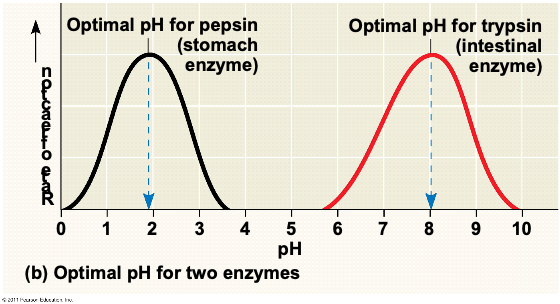Name the corresponding characteristic of life:
You observe under a microscope that our skin is made up of layers of epidermal cells.
Made up of one or more cells, show organization
Oils are an example of this macromolecule.
Lipids
Which organelle is this? What is its function?

Mitochondria, generating ATP/energy from oxygen
Draw an endothermic reaction.

What is the main difference between passive and active transport?
Passive: Requires no energy
Active: Requires energy (ATP)
Name the corresponding characteristic of life:
Tadpoles lose their tails and gain legs as they mature into frogs.
Growth and development
This macromolecule is produced by ribosomes.
Proteins
Which organelle is this? What is its function?

Chloroplast, store sunlight energy into glucose via photosynthesis
Draw an exothermic reaction.

Is the bottom membrane protein an example of active or passive transport?
Passive transport
Name the corresponding characteristic of life:
In seahorses, the male gets pregnant and gives birth.
Reproduction
Which macromolecule has the following monomer?

Nucleic acid
Name the two organelles labeled C and E.

Cytoplasm/cytosol, nucleus
What does an enzyme do to a reaction?
It lowers the activation energy.
Which type of membrane protein is shown on the top?
Carrier protein
Name the corresponding characteristic of life:
Plants have a root and shoot system that absorbs water and other necessary nutrients for photosynthesis.
Shows organization, obtain and use energy
Which element is most essential to life?
Carbon
Aside from the cell wall and chloroplast, what other organelle is specific to plant cells?
A large central vacuole for storing water
In the enzyme-substrate complex, which is the lock, the key, and the keyhole?
enzyme = lock
substrate = key
active site = keyhole
Which side of the U-tube will increase in volume?
Left side (A)
Name the corresponding characteristic of life:
After seeing your biology quiz grade, you start using new study techniques to try and improve your score.
Adapt over time, respond to stimuli
A lack of this macromolecule would lead to fatigue and weakness.
Carbohydrates
What would happen to a cell if it no longer had a functioning golgi apparatus?
One possible answer: It would not be able to receive/ship necessary nutrients.
According to the graph, what is the most likely pH range for the intestine?

6-10
A cell with a 20% concentration of glucose is placed into a solution with a 70% concentration of glucose. What kind of solution is it in relation to the cell?
Hypertonic solution